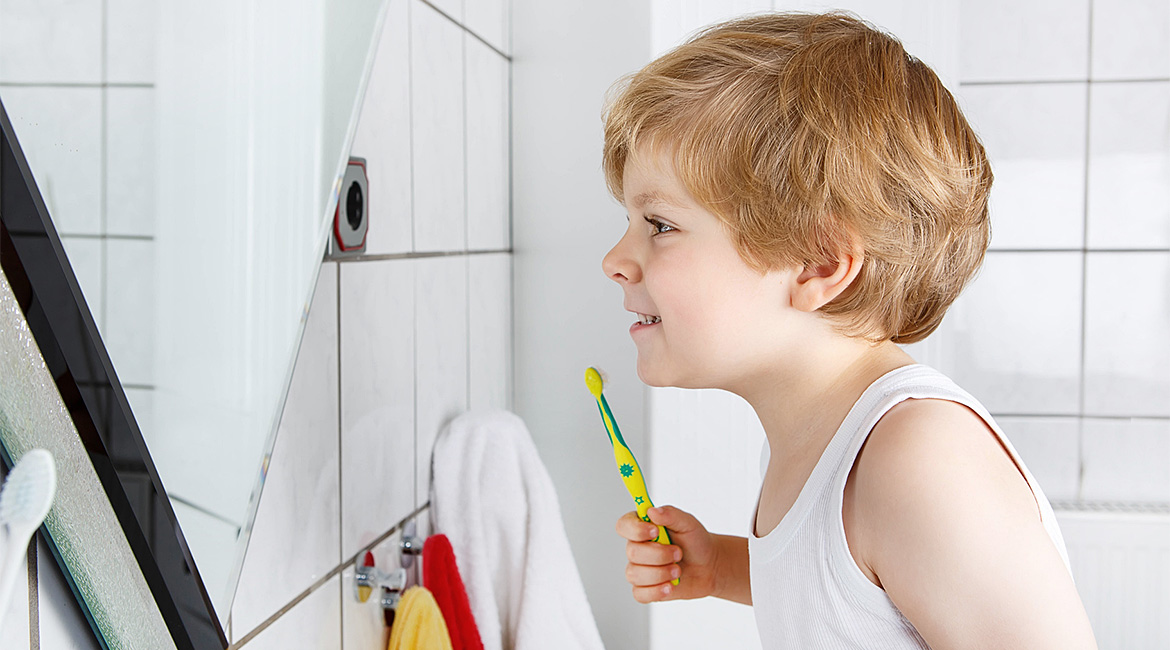There is no better time than the present to teach your child how to cultivate healthy habits that will last a lifetime. By showing them how to incorporate healthy strategies into their daily life, you’ll be setting them up for a future of healthy decisions and a life of positive choices. In fact, according to the Centers for Disease Control and Prevention, offering daily routines and rules can help provide your children with order and structure for the day, all of which will benefit them for years to come. There are several strategies you can employ to ensure that your child learns to master healthy habits like eating right and having good hygiene.
Begin with Breakfast
Did you know that children who skip breakfast are more likely to end up with diabetes or become obese later in life? Each morning, before school, your preschooler should sit down to a nice breakfast. A morning meal helps regulate blood sugar and provide energy for your child’s day. It also signals to your child’s body that they are awake and ready to begin the day. Try to be mindful of sugary cereals which may cause your child’s energy to crash before lunch. Look instead for whole grains, protein and fruits to pack on your child’s morning plate.
Wash Away Germs
Because of their curious nature, preschool children are exposed to many different germs throughout the day. Some germs are great for the development of your child’s immune system but others are harmful and can make your child sick. By teaching your child to wash their hands after shopping at the store, playing outside or before eating and drinking, you’ll set them on a healthy routine that will prove beneficial during flu season. You’ll also want to teach your child to cough or sneeze in their elbow, not in their hands.
Put Safety First
As your preschooler transitions from a car seat to a booster, it’s important to talk about the importance of wearing a seatbelt. You should also model good behavior by always wearing yours. According to the National Highway Traffic Safety Administration wearing a seatbelt can reduce the risk of a fatality by up to 60 percent. The same safety precautions go for wearing a helmet when riding a bike or other recreational device. You’ll also want to talk to your child about safety around the house, fire safety and water safety.
Eat the Rainbow
It is never too early to start discussing positive food choices. Though it’s likely your child is in a PB&J only stage, you’ll still want to show them how to select healthy, nutritious foods. Explain to your child that selecting food from the Earth and not from a box is the best way to get nutrients. The more colorful the plate, the better! Take a trip to a farm or the farmer’s market to explain how food arrives at your grocery store. Understanding the difference between natural vs. processed foods can help your child make healthy choices as they get older. And don’t be afraid to try new foods with your child, like a kiwi or an avocado. They just might love it!
Wear Sunscreen
Skin damage can begin at a young age so it’s important to teach your children how to apply it correctly so they don’t get a bad burn. When playing outside, apply to all areas that may be touched by the sun. After playing in the water, make sure to reapply as the previous sunscreen may have washed off.
Brush Everyday
As soon as your babe’s first tooth arrives, it’s time to take care of those pearly whites. The American Dental Association recommends that your preschooler brush their teeth at least two times a day to ensure they are removing bacteria and sugars from the teeth. They should also begin flossing once a day. Routine visits to the dentist every six months will help ensure that they are maintaining good care of their teeth. Daily brushing is important for the health of your teeth, your body and can help ward off infections and tooth loss and decay in the future. Until your child masters their brushing technique, it is recommended that you get in there and help them with the trouble spots. Remember to only use a pea-sized amount of toothpaste and remind your little not to swallow.
Eat Dinner Together
Having dinner together can reduce stress and anxiety for your child and help them eat slower and with more thought. Having a set meal time lets you reconnect as a family and spend some time talking about each other’s day. If you start this when their young, it will be a lasting memory for them.
Go Outside
Playtime in the outdoors each day can let your child explore with their imagination, gain important fine motor skills, learn about the world around them and release stress and anxiety.
Read a Bedtime Story
Reading to your child before bed helps promote literacy and gives them a head start at school. Reading also helps you connect with your child and offers them an opportunity to talk with you about their day or ask you any questions they may have. It also lets them transition from wakefulness to sleep time.
Make a Sleep Schedule
The most important thing you can do for your child is make a sleep routine. Your child’s body runs on an internal clock that regulates when they wake up and when they fall asleep. According to the National Sleep Foundation, preschool age children should get between 11 and 13 hours of sleep each night to function properly the next day. You should strive to put them to bed and wake them up at the same time every day. You should also keep their rooms cool and dark and keep out any superficial light.
Structuring your child’s day and teaching them healthy habits is an important part of giving them a bright start to the future. Start today!




